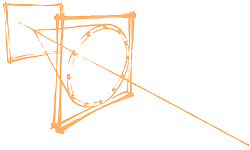Orateur
Dr
Oswald Siegmund
(University of California)
Description
Microchannel plate devices are powerful detection devices for Cherenkov light, with good imaging and timing characteristics. However, currently the largest format devices available are of the order of 5cm, and these are expensive compared with photomultiplier tubes. One significant problem in covering large areas with such devices is both the cost, and the difficulty in fabricating large size microchannel plates. The packaging of a large sealed tube device, and producing a large area photocathode and imaging/timing readout are also of concern. As part of a collaborative program between university of California, Berkeley, the Argonne National Laboratory, University of Chicago, and several commercial companies, we are developing a 200mm square sealed tube microchannel plate detector scheme. One basis of the new device is the incorporation of a novel implementation of microchannel plates. We are developing comparatively low cost microchannel plates using borosilicate hollow core tubes. The resistive and photo-emissive surfaces are then applied by atomic layer deposition, eliminating the wet etch and thermal reduction processes for normal glass microchannel plates. Initial results on 25mm microchannel plates for gain, imaging performance and lifetime are very encouraging. Large 200mm microchannel plate substrates have been made and will be tested in the next few months. Designs for the sealed tube assembly, stripline anodes and entrance windows have been completed and are in fabrication. The overall device will be 220mm square and only about 10mm thick. The photocathode baseline is to use a bialkali material to match the Cherenkov spectrum, and to keep the overall background rate at an acceptable level. Stripline anodes are also being developed which will give less than 1mm spatial resolution using novel timing electronics. Based on data from existing designs, the new electronics should provide timing accuracy of a few picoseconds.
| Please indicate "poster" or "plenary" session. Final decision will be made by session coordinators. | Plenary |
|---|
Auteur principal
Dr
Oswald Siegmund
(University of California)
Co-auteurs
Prof.
Henry Frisch
(University of Chicago)
Dr
Jason McPhate
(University of California)
Mlle
Sharon Jelinsky
(University of California)



